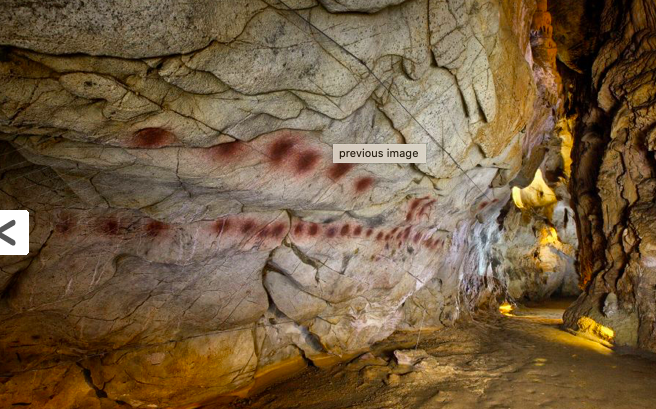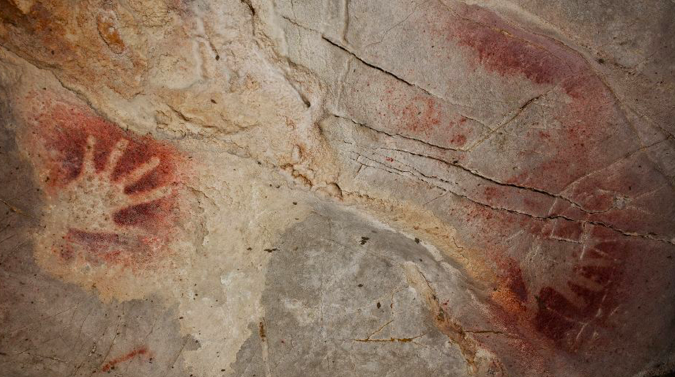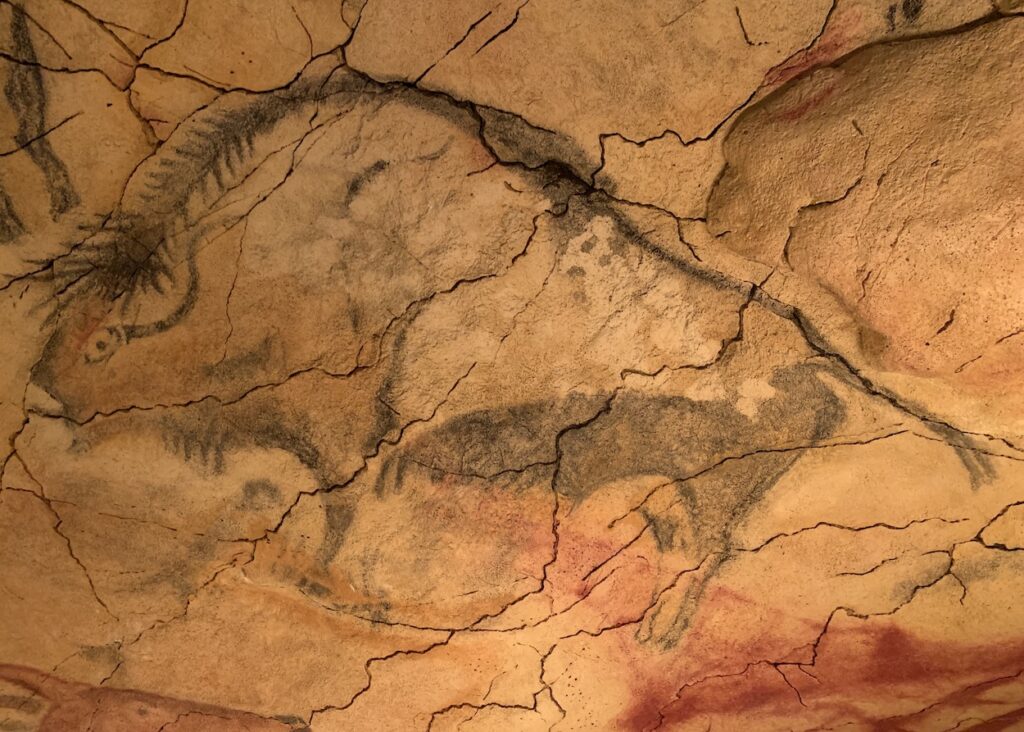Paleolithic rock art in Cantabria, northern Spain
In northern Spain, we will find many interesting geologic features to explore during our month-long trip. Our first day’s activities (on 30 August) focused on the intersection of geology and early humans. In Cantabria, there are 17 cave sites that can be visited. We visited three caves whose walls were decorated during the Late Paleolithic period starting more than 40,000 years ago. These are among the oldest known rock paintings in the world.
The caves are found in limestone rock, where most caves are found. River gravel and erosional features in the caves indicate that subterranean rivers carved the caves. They continue to be modified by rainwater seeping into the underground cavities. Water containing dissolved CO2 makes weak carbonic acid (think acid rain) that dissolves limestone as it flows or seeps into the rock.
Note about Spain’s regions
Spain is divided into 17 “autonomous communities” that, like states in the U.S., have their own statues and government in addition to governing laws of the federal government. On this trip, we are visiting three autonomous communities along the northern coast of Spain: Austurias (east of Galicia), Cantabria (east of Austurias), and the Basque Country (east of Cantabria). Most of the caves with rock art are found in Cantabria.

El Castillo (the castle) and Las Monedas (the coins) Caves
There are many small caves that can be visited in Cantabria. This web site provides information about how to visit: https://cuevas.culturadecantabria.com/en/. The number of visitors is quite limited and to make sure we could access the caves, I bought tickets in advance. I choose El Castillo and Las Monedas caves because they are close to each other and to a Visitors Center in the town of Puente Viesgo.
El Castillo Cave was used both as a habitation and a painting site. It is believed that early humans lived in this region for >100,000 years and that they used this cave as early as 40,000 years ago. There are 100s of images in the cave. Unfortunately, we were not allowed to take photographs, but I’m including two photos from the web site above.


In contrast to El Castillo cave, Las Monedas Cave was only used for artistic purposes and probably just during the past 10,000 years or so. The cave is called “the coins” because some coins were found in a hole where a flood had deposited them. It has exquisite formations of stalactites, stalagmites, and columns. We really wanted to take some photos! The most interesting art we observed was a reindeer, reminding us that the people were entering these caves during the last glacial period—the maximum was 18,000 years ago.

Altamira Cave
The best known Cantabrian cave is Altamira, which was discovered in 1879 and opened to the public in the early 20th century. After realizing that the many visitors were causing damage to the cave, it was mostly closed to the public in the late 70s. In 2001, a “new cave” opened. It is a replica of the actual cave and provides visitors with the opportunity to see what the original art looks like. Altamira is located very close to the charming and historically important town of Santillana Del Mar, where we stayed after visiting the cave site.




Dating of the charcoal and other materials suggests to archeologists that different groups of early humans completed the paintings from 36,000 to 13,000 years ago, when a rockfall sealed off the large entrance. These groups were nomadic and moved between the coast and more mountainous regions, according to the seasons. Some of the caves were used for habitation—certainly important during these cold periods—and some were used solely as “art galleries”. Some of the art covers older art, showing that people were using these sites over long periods of time. The people in these caves were Homo sapiens (formerly called Cro-Magnon). Neanderthals (Homo neanderthalensis) and modern humans (Homo sapiens) may have coexisted here for a few thousand years, but Neanderthals are believed to have died out about 40,000 years ago.
Mirón Cave

The Visitors Center in Puerto Viesgo had an interesting exhibit about the Mirón cave. Archeologists have excavated eight layers corresponding to human occupation in the cave from 44,000 years ago to less than 15,000 years ago. Incredibly, in a layer about 18,000 years ago, they uncovered the skeleton of a woman they called “la dama roja” (the red lady), so called because her bones were smeared with ochre (red iron oxide). She was described as: “…an apparently healthy and fairly robust woman, approximately 1.6 m (5.3′) tall and weighing about 56 kg (123 lb). She was well fed as a child. In her teeth there is no trace of dietary deficiencies. She died around the cage of 35.” Of course, it’s unlikely that few people lived past 35 in those times.
How do these caves compare to Lascaux?
Probably the best known Paleolithic cave in Europe is the Lascaux cave in France. The art is impressive, but at 17,000 years old, it pales in comparison to the 40,000 year-old art work in Cantabria. As at Altamira, Lascaux cave has been closed to the general public, but a nearby replica has been created for visitors. They have also created a 3-D replica of Lascaux. When we visited the science museum in Trento, Italy last September, we were able to don 3-D virtual reality glasses and explore Lascaux cave as if we were really there. Keep an eye out to see if it’s available elsewhere!


Fascinating and as always so well presented!!
Thanks Sarah!
Amazing that the art work is still so vibrant.
Those natural pigments!